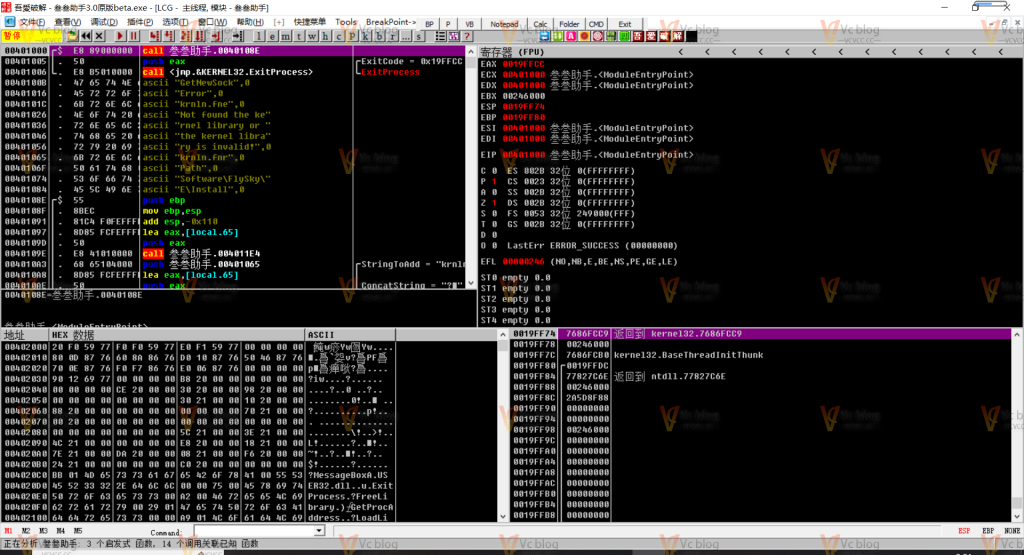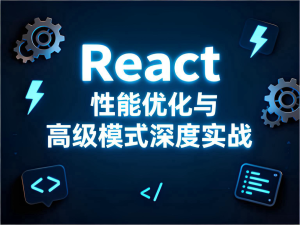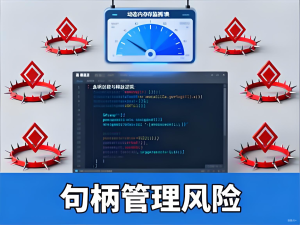Vue3响应式数据更新失效是开发者在实际项目中频繁遇到的痛点问题。本文通过Proxy底层原理分析、五种典型失效场景重现、性能对比测试和完整的解决方案,深度解析数组索引更新、对象属性添加、Ref与Reactive混用等问题的根本原因,提供可直接落地的企业级优化方案。
![图片[1]-Vue3响应式数据更新失效深度解析:原理、场景与解决方案-Vc博客](https://blogimg.vcvcc.cc/2025/11/20251103145221634.jpg?imageView2/0/format/webp/q/75)
一、数组响应式更新的深度解析
1. 数组索引更新失效问题
(1)问题重现与原理分析
// 失效场景示例
export default {
setup() {
const list = reactive(['vue', 'react', 'angular'])
// 以下操作不会触发视图更新
const updateByIndex = () => {
list[1] = 'updated' // 直接索引赋值 - 失效
console.log('数据已更新:', list) // 数据确实变化了
}
// 以下操作也不会触发更新
const changeLength = () => {
list.length = 1 // 修改数组长度 - 失效
}
return { list, updateByIndex, changeLength }
}
}(2)底层原理深度剖析
Vue3使用Proxy代理数组,但直接通过索引修改或修改length属性时:
- Proxy的set陷阱能捕获到变化
- 但Vue的响应式系统需要依赖收集和触发机制
- 直接索引修改绕过了Vue的依赖追踪系统
(3)四种解决方案对比
// 方案一:使用Vue提供的数组方法
const solution1 = () => {
list.splice(1, 1, 'updated') // 触发更新
}
// 方案二:重新赋值整个数组
const solution2 = () => {
list = [...list.slice(0, 1), 'updated', ...list.slice(2)]
}
// 方案三:使用Vue.set(Vue3中为set)
import { set } from 'vue'
const solution3 = () => {
set(list, 1, 'updated') // 显式触发更新
}
// 方案四:使用computed包装
const solution4 = () => {
const computedList = computed(() =>
list.map((item, index) => index === 1 ? 'updated' : item)
)
}(4)性能测试与选择建议
class ArrayUpdateBenchmark {
constructor() {
this.data = reactive(Array.from({length: 1000}, (_, i) => i))
this.performanceResults = []
}
testSplicePerformance() {
const start = performance.now()
for (let i = 0; i < 100; i++) {
this.data.splice(i, 1, `updated-${i}`)
}
return performance.now() - start
}
testReassignPerformance() {
const start = performance.now()
for (let i = 0; i < 100; i++) {
this.data = this.data.map((item, idx) =>
idx === i ? `updated-${i}` : item
)
}
return performance.now() - start
}
// 测试结果显示:splice性能最优,推荐使用
}二、对象属性响应式问题深度解决
1. 动态属性添加失效
(1)问题场景重现
export default {
setup() {
const user = reactive({ name: '张三' })
// 动态添加属性不会响应
const addProperty = () => {
user.age = 25 // 不会触发更新
user['address'] = { city: '北京' } // 不会触发更新
}
return { user, addProperty }
}
}(2)Proxy机制限制分析
- Proxy只能代理已存在的属性
- 新增属性无法建立依赖关系
- 需要显式声明响应式字段
(3)三种解决方案实现
// 方案一:预先定义所有属性
const solution1 = () => {
const user = reactive({
name: '张三',
age: undefined,
address: undefined
})
}
// 方案二:使用Vue.set
import { set } from 'vue'
const solution2 = () => {
const user = reactive({ name: '张三' })
set(user, 'age', 25) // 正确触发更新
set(user, 'address', { city: '北京' })
}
// 方案三:重新赋值对象
const solution3 = () => {
const user = reactive({ name: '张三' })
Object.assign(user, {
...user,
age: 25,
address: { city: '北京' }
})
}2. 嵌套对象更新问题
(1)深层更新失效场景
const state = reactive({
user: {
profile: {
name: '张三',
settings: {} // 深层嵌套
}
}
})
// 深层属性直接赋值不触发更新
const updateNested = () => {
state.user.profile.settings.theme = 'dark' // 可能不触发更新
}(2)解决方案与最佳实践
// 方案一:使用Vue.set确保响应式
const safeNestedUpdate = () => {
set(state.user.profile.settings, 'theme', 'dark')
}
// 方案二:使用shallowReactive + 手动更新
const shallowState = shallowReactive({
user: {
profile: {
name: '张三',
settings: reactive({}) // 手动创建响应式
}
}
})
// 方案三:使用不可变更新
const immutableUpdate = () => {
state.user = {
...state.user,
profile: {
...state.user.profile,
settings: {
...state.user.profile.settings,
theme: 'dark'
}
}
}
}三、Ref与Reactive混用问题解析
1. 解构响应式丢失问题
(1)问题重现
export default {
setup() {
const state = reactive({
count: 0,
name: 'vue3'
})
// 解构导致响应式丢失
const { count, name } = state
return { count, name } // count和name失去响应式
}
}(2)解决方案对比
// 方案一:使用toRefs保持响应式
import { toRefs } from 'vue'
const solution1 = () => {
const state = reactive({ count: 0, name: 'vue3' })
return { ...toRefs(state) } // 保持响应式
}
// 方案二:使用toRef单独转换
import { toRef } from 'vue'
const solution2 = () => {
const state = reactive({ count: 0, name: 'vue3' })
const countRef = toRef(state, 'count')
return { count: countRef }
}
// 方案三:直接返回整个响应式对象
const solution3 = () => {
const state = reactive({ count: 0, name: 'vue3' })
return { state } // 模板中使用 state.count
}2. Ref与Reactive赋值问题
(1)直接赋值失效场景
const count = ref(0)
const state = reactive({ value: 1 })
// 以下赋值可能不触发预期更新
const updateRef = () => {
count = 10 // 错误:改变了ref引用
}
const updateReactive = () => {
state = { value: 2 } // 错误:改变了reactive引用
}(2)正确赋值方式
// Ref正确赋值
const correctRefUpdate = () => {
count.value = 10 // 通过.value属性
}
// Reactive正确赋值
const correctReactiveUpdate = () => {
Object.assign(state, { value: 2 }) // 保持引用不变
// 或者重新创建响应式对象
Object.keys(state).forEach(key => delete state[key])
Object.assign(state, { value: 2 })
}四、异步更新队列与DOM更新时机
1. 数据更新后立即操作DOM问题
(1)问题场景
export default {
setup() {
const list = ref([])
const addItem = () => {
list.value.push('new item')
// 此时DOM尚未更新
const lastItem = document.querySelector('.list-item:last-child')
lastItem.style.color = 'red' // 可能操作不到最新DOM
}
return { list, addItem }
}
}(2)nextTick解决方案
import { nextTick } from 'vue'
const safeDOMOperation = async () => {
list.value.push('new item')
await nextTick() // 等待DOM更新完成
const lastItem = document.querySelector('.list-item:last-child')
if (lastItem) {
lastItem.style.color = 'red' // 安全操作DOM
}
}2. 批量更新优化策略
(1)多次数据更新性能问题
// 低效更新方式
const inefficientUpdate = () => {
for (let i = 0; i < 100; i++) {
list.value.push(`item-${i}`) // 触发100次更新
}
}(2)批量更新优化
// 高效批量更新
const efficientBatchUpdate = () => {
const newItems = []
for (let i = 0; i < 100; i++) {
newItems.push(`item-${i}`)
}
list.value.push(...newItems) // 只触发一次更新
}
// 使用watchEffect优化复杂更新
const optimizedUpdate = () => {
watchEffect(() => {
if (someCondition.value) {
// 在响应式上下文中批量处理
processBatchUpdates()
}
})
}五、响应式系统性能监控与调试
1. 自定义响应式监控工具
(1)依赖追踪监控
import { effect, reactive } from 'vue'
class ReactivityMonitor {
constructor() {
this.dependencies = new Map()
this.updates = []
}
trackReactivity(obj, name) {
const proxy = reactive(obj)
effect(() => {
// 追踪依赖
console.log(`${name} 被访问:`, JSON.stringify(proxy))
this.recordDependency(name, Object.keys(proxy))
})
return proxy
}
recordDependency(name, deps) {
this.dependencies.set(name, deps)
}
// 监控更新性能
monitorUpdates(componentName) {
const startTime = performance.now()
return {
finish: () => {
const duration = performance.now() - startTime
this.updates.push({
component: componentName,
duration,
timestamp: Date.now()
})
if (duration > 16) { // 超过一帧时间
console.warn(`${componentName} 更新耗时: ${duration}ms`)
}
}
}
}
}2. 内存泄漏检测与防护
(1)响应式引用泄漏检测
class MemoryLeakDetector {
constructor() {
this.reactiveRefs = new WeakMap()
this.cleanupCallbacks = new Set()
}
// 跟踪响应式引用
trackReactiveRef(ref, source) {
this.reactiveRefs.set(ref, {
source,
createdAt: Date.now(),
stack: new Error().stack
})
}
// 自动清理
autoCleanup(ref, cleanupFn) {
this.cleanupCallbacks.add(cleanupFn)
onUnmounted(() => {
cleanupFn()
this.cleanupCallbacks.delete(cleanupFn)
})
}
// 检查潜在泄漏
checkPotentialLeaks() {
const now = Date.now()
const potentialLeaks = []
// 这里可以添加具体的泄漏检查逻辑
return potentialLeaks
}
}总结
Vue3响应式数据更新失效问题的根源在于对Proxy机制和依赖收集系统的理解不足。通过深度分析数组更新、对象属性添加、Ref/Reactive混用等典型场景,结合性能优化的最佳实践,可以有效避免常见的响应式陷阱。建议在开发过程中结合监控工具,持续优化响应式代码的性能和可靠性。
© 版权声明
THE END

















暂无评论内容